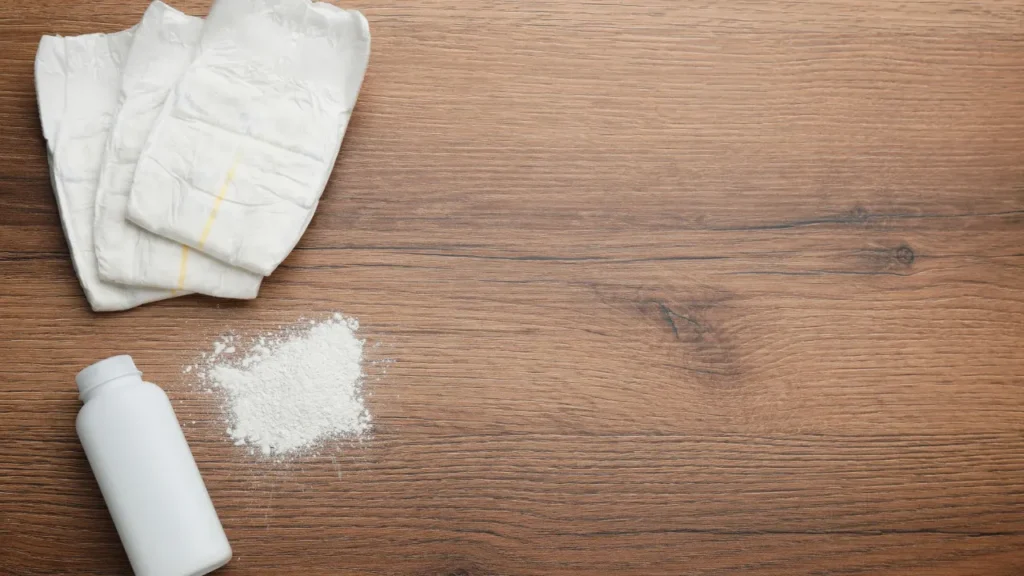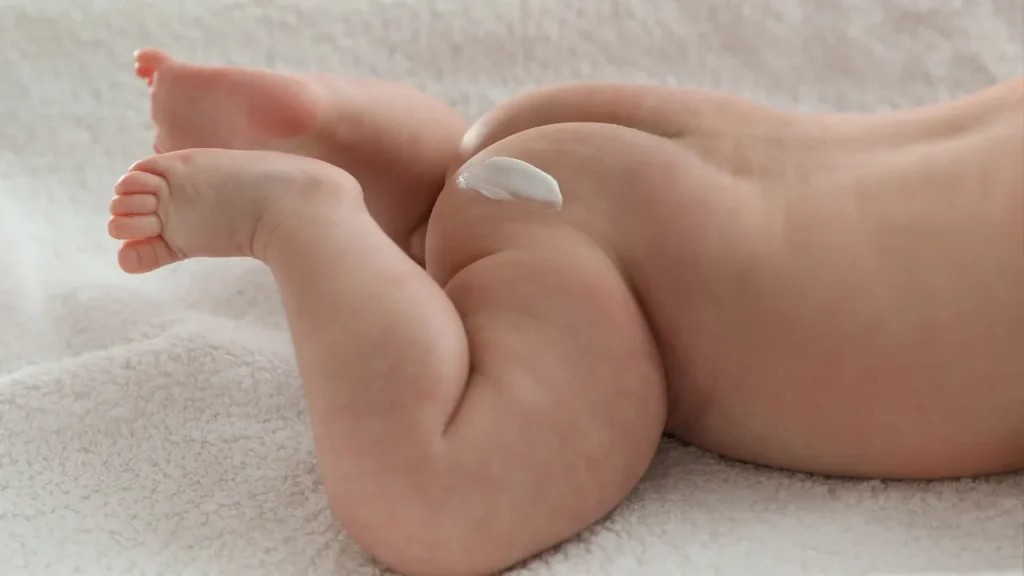Description
Infants along with younger children who have diaper rash are those with skin irritation around the diaper area. It is marked by irritation, redness, and inflammation and may cause the youngster pain and discomfort. The rash can be accompanied by pustules or blisters and might take the form of little red bumps or bigger patches of irritated skin. In extreme circumstances, the youngster may endure pain when peeing or having a bowel movement. The children may bleed due to their skin getting rough.
You May Also Like:
HOO RAA CBD VS PARTNERED PROCESS CBD
SMILZ CBD GUMMIES VS PARTNERED PROCESS CBD GUMMIES
Diaper rash: Description, Causes, And Treatment Protocol is an original (HealthXWire) article.
Possible Causes
The following are some of the potential reasons for diaper rash: –
Friction: Diapers can irritate and inflame the skin besides producing friction against the outermost layer of the skin. Whenever the child is wearing diapers that are too small or overly snug, it is particularly probable to occur.
Moisture: When a person’s skin is exposed to moisture for a prolonged period, it could get irritated and soft. It is typical for babies alongside young children to wear diapers because they may retain humidity on their outer layer of skin. Moisture constitutes one of the primary triggers of diaper rashes. A moist or filthy diaper can create a humid environment that irritates one’s skin and promotes the growth of bacteria and fungi.
Irritants: Diaper rash may also be brought on by the chemicals found in wipes, disposable diapers, and other goods. This covers preservatives, colors, and perfumes.
Infections: Another factor in diaper rash is fungal or bacterial infections. Such infections may develop if the skin is injured or if the diaper region fails to remain dry and clean.
Allergies: Certain diaper components, like latex or perfumes, may induce an allergic response in some babies and result in diaper rashes.
Exacerbating and Mitigating Factors
The following are some elements that might either aggravate or alleviate diaper rash: –
Diaper type: Diaper rash occurrence might be higher depending on the type of diaper. For instance, compared to cloth diapers, disposable diapers might retain more moisture against one’s skin.
Changes in diaper frequency: Diaper rash can be avoided and lessened with frequent diaper changes that keep the diaper region dry and clean.
Diaper quality: A diaper rash may be more likely to appear depending on the diaper’s quality. Diaper rash is less likely when diapers are of high quality, absorbency, and breathability.
Diet: Diaper rash risk can also be influenced by a child’s nutrition. Given that breast milk includes antibodies that might help defend against infections, breastfed newborns may experience diaper rash less frequently than babies who are fed formula.
Hygiene: Diaper rash can be prevented and lessened by following good hygiene habits, which include changing diapers often and thoroughly washing the diaper region.
Health conditions: Diaper rash risk might be increased by certain medical diseases like eczema or psoriasis.
Medications: By upsetting the equilibrium of germs on the skin, certain medications, including antibiotics, might increase the possibility of diaper rash.

Standard Treatment Protocol(s)
The following stages are frequently included in the normal diaper rash management protocol: –
Maintaining a tidy and dry diaper region: Changing diapers frequently may keep the diaper region clean and dry. Gentle cleaning with lukewarm water and light soap is encouraged as well.
Using a barrier cream: The skin can be shielded from irritants and moisture by barrier lotions like petroleum jelly or zinc oxide.
Avoiding irritants: Refraining from the use of baby wipes, detergents, and soaps that include harmful chemicals or smells that may irritate the skin.
Letting the skin breathe.: Diaper rash might be prevented by allowing the skin to breathe for a little while each day.

Treatment Options
There are however many additional treatment alternatives for diaper rash alongside conventional regimens, such as the following: –
Prescription Medications: A doctor may suggest prescription medications whenever the diaper rash becomes severe or fails to get better after following the recommended treatment methods and using natural therapies: –
- Antifungal creams
Diaper rash brought on by fungi, particularly yeast infections, is treated with antifungal treatments. These creams incorporate an antifungal drug, like miconazole or clotrimazole, which may assist in the healing process and decrease swelling.
- Hydrocortisone cream
A topical steroid called hydrocortisone cream might alleviate diaper rash-related swelling and itching. This is usually applied briefly and ought not to be applied on skin that has been broken.
- Antibiotic creams
Creams containing antibiotics are administered to treat diaper rash brought about by bacterial infections. Such creams include antibiotics, such as polymyxin B or neomycin, that can help eliminate the infection and decrease inflammation.
Over-the-counter (OTC) formulations: For the treatment of diaper rash, it has a variety of over-the-counter lotions and ointments available. The active chemicals in these products, include petrolatum, lanolin, or zinc oxide. These chemicals may shield the skin from irritation and wetness. Desitin, Boudreaux’s Butt Paste, and A+D Ointment are a few well-liked OTC diaper rash remedies.
Nutritional supplements: The treatment of diaper rash may benefit from specific dietary supplements. Following are some illustrations: –
- Vitamin D
Vitamin D constitutes a fat-soluble vitamin known to be essential for immunological and bone health. Additionally, it can aid in making the skin healthier. According to several research, a lack of vitamin D might raise the likelihood of diaper rash. Therefore, it is critical that young children and newborns consume enough vitamin D in their diets or from safe sun exposure.
- Vitamin E
The fat-soluble vitamin with antioxidant capabilities is vitamin E. It can aid in preventing free radical damage to the skin. A topical vitamin E application may be beneficial for addressing diaper rash, according to certain research. Foods including seeds, nuts, and vegetable oils contain vitamin E. Nevertheless, it’s crucial to speak with a medical expert before using any supplements.
- Zinc
Minerals like zinc are necessary for development and growth. Several diaper rash treatments and ointments contain zinc oxide as an essential ingredient. In the diaper region, zinc can aid in reducing inflammation and fostering recovery. It might be beneficial to add a zinc supplement to their diet if the children fail to absorb sufficient zinc through their diet.
- Probiotics
Probiotics are useful living bacteria and yeasts for the body. These are renowned for their capacity to strengthen the body’s immune system and enhance gastrointestinal health. Infections around the diaper region can be prevented and treated with probiotics. Breast milk from a mother who breastfeeds her child may already have a healthy amount of probiotics. Nevertheless, adding probiotics to the child’s diet might be advantageous if they are formula-fed or have just received antibiotic treatment. Probiotic strains including Bifidobacterium lactis and Lactobacillus rhamnosus have been investigated for their capacity to lower the possibility of diaper rash.
While nutritional supplements can prove useful in managing diaper rash, it is crucial not to forget that these items must not be utilized in place of regular treatment methods. Before undertaking dietary modifications for children, it is always vital to consult with a medical expert.
Natural and herbal remedies: Following several herbal and natural treatments for diaper rash might prove beneficial: –
- Aloe vera
Aloe vera has ingredients that can lessen inflammation and soothe sensitive skin. Diaper rash may be treated through the application of aloe vera gel on the afflicted region.
- Coconut oil
Coconut oil may be rubbed directly onto the irritated region or mixed into bath water and it can help to calm one’s skin.
- Chamomile
Chamomile has anti-inflammatory and antibacterial qualities and it may be applied to create a tea or topically used as a compress to soothe skin irritations.
- Calendula
For generations, people have utilized calendula cream primarily as a natural medicine to calm and treat skin irritations. The calendula flower contains anti-inflammatory and antibacterial characteristics that could aid in lessening inflammation and put an end to infections.
- Witch hazel
An astringent known as witch hazel might help lessen swelling and calm inflamed skin. It is possible to use it topically or in a warm bath.
- Oatmeal
A natural cure for soothing inflamed skin is oatmeal. It has elements that may assist with wound healing and decrease inflammation. Diaper rash problems can be reduced by utilizing oatmeal-based bath products in a warm bath.
- Breast milk
Immunoglobulins and nutrients included in breast milk may assist in healing and calming inflamed skin. Breast milk might be applied to the injured region in order to encourage healing and minimize swelling.

Conclusion
Diaper rash is a common concern for infants and toddlers who develop skin irritation due to inflamed skin around the diaper. Diaper rash can easily be prevented by changing diapers frequently, using gentle wipes, and applying a protective barrier cream to help create a healthy diaper environment.
Parents must take notice of the type of diapers, the frequency of the diaper being changed, hygiene, etc. If diaper rash persists, parents may opt for healing ointments while opting for breathable diapers that can aid in resolution. While diaper rash is generally a temporary and benign condition, it highlights the significance of attentive diapering practices. Parents and caregivers should equip themselves with the knowledge to ensure a happier and healthier experience for their little ones.

Additional resources for further reference
https://www.mayoclinic.org/diseases-conditions/diaper-rash/symptoms-causes/syc-20371636
https://www.aad.org/public/everyday-care/itchy-skin/rash/treat-diaper-rash
https://www.webmd.com/parenting/diaper-rash-treatment
https://www.healthychildren.org/English/ages-stages/baby/diapers-clothing/Pages/Diaper-Rash.aspx
Important Note: The information contained in this article is for general informational purposes only, and should not be construed as health or medical advice, nor is it intended to diagnose, prevent, treat, or cure any disease or health condition. Before embarking on any diet, fitness regimen, or program of nutritional supplementation, it is advisable to consult your healthcare professional in order to determine its safety and probable efficacy in terms of your individual state of health.
Regarding Nutritional Supplements Or Other Non-Prescription Health Products: If any nutritional supplements or other non-prescription health products are mentioned in the foregoing article, any claims or statements made about them have not been evaluated by the U.S. Food and Drug Administration, and such nutritional supplements or other health products are not intended to diagnose, treat, cure, or prevent any disease.


